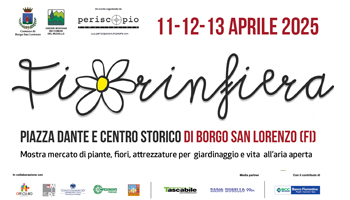
The villa was built by Chino Chini around 1923, as a residence for himself and his family in Borgo San Lorenzo, near the Fornaci San Lorenzo. At that time, in fact, Chino took care of the manufacturing and therefore he had the need to live close by. It is an original construction in stone and brick, quite freely inspired by the neo-Gothic models that have been spreading since the beginning of the 20th century.
 The exterior is decorated with numerous tiles from the production of the Fornaci, especially from the repertoire created for the recent monumental decorative enterprise of the Berzieri Baths of Salsomaggiore (1920 – 1923); the house was financed with the proceeds from the project in Salsomaggiore Terme. Straight ceramic appeals stand out on the façade overlooking the avenue; they are curved in correspondence with the archivolts of the windows and show coloured or gilded motifs with broken lines, rhombuses, triangles, squares and weaves. Square and round tiles with figurative details from various eras decorate the terraces and the attic; it can be considered a sort of permanent display of their samples. The balustrade and the roof of the terrace are supported on columns in Grès with a metallic luster, while around its base runs a series of lion heads in natural Grès. Under the canopy, a Madonna and Child in imitation of Della Robbia hangs between two fruit festoons. The two gates and the surrounding wall are also decorated with various minute ceramic pieces, as well as a natural terracotta relief depicting a Putto holding a moray eel; also in ceramic the plaque with the name and the plaque of the old bell, with a green lizard biting its tail.
The exterior is decorated with numerous tiles from the production of the Fornaci, especially from the repertoire created for the recent monumental decorative enterprise of the Berzieri Baths of Salsomaggiore (1920 – 1923); the house was financed with the proceeds from the project in Salsomaggiore Terme. Straight ceramic appeals stand out on the façade overlooking the avenue; they are curved in correspondence with the archivolts of the windows and show coloured or gilded motifs with broken lines, rhombuses, triangles, squares and weaves. Square and round tiles with figurative details from various eras decorate the terraces and the attic; it can be considered a sort of permanent display of their samples. The balustrade and the roof of the terrace are supported on columns in Grès with a metallic luster, while around its base runs a series of lion heads in natural Grès. Under the canopy, a Madonna and Child in imitation of Della Robbia hangs between two fruit festoons. The two gates and the surrounding wall are also decorated with various minute ceramic pieces, as well as a natural terracotta relief depicting a Putto holding a moray eel; also in ceramic the plaque with the name and the plaque of the old bell, with a green lizard biting its tail.
 The interior provides examples of cladding, particularly interesting also for the fact that they have been perfectly preserved, especially in the majolicas of the Bathroom, in those that cover the fireplace and in the spectacular floor with The Birth of Venus, designed by Galileo Chini and inspired by the famous Florentine painting of the Renaissance and made in polychrome stoneware by the Fornaci.
The interior provides examples of cladding, particularly interesting also for the fact that they have been perfectly preserved, especially in the majolicas of the Bathroom, in those that cover the fireplace and in the spectacular floor with The Birth of Venus, designed by Galileo Chini and inspired by the famous Florentine painting of the Renaissance and made in polychrome stoneware by the Fornaci.
© Il Filo – Idee e Notizie dal Mugello



